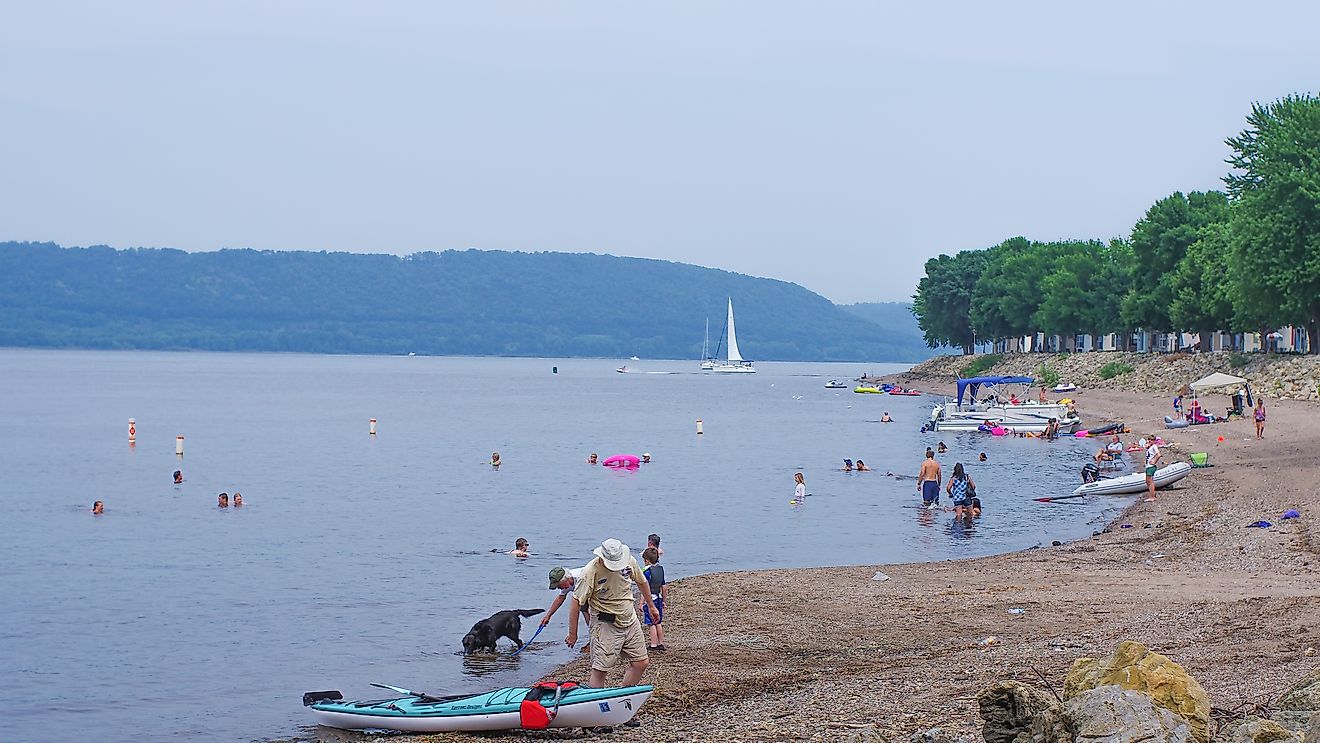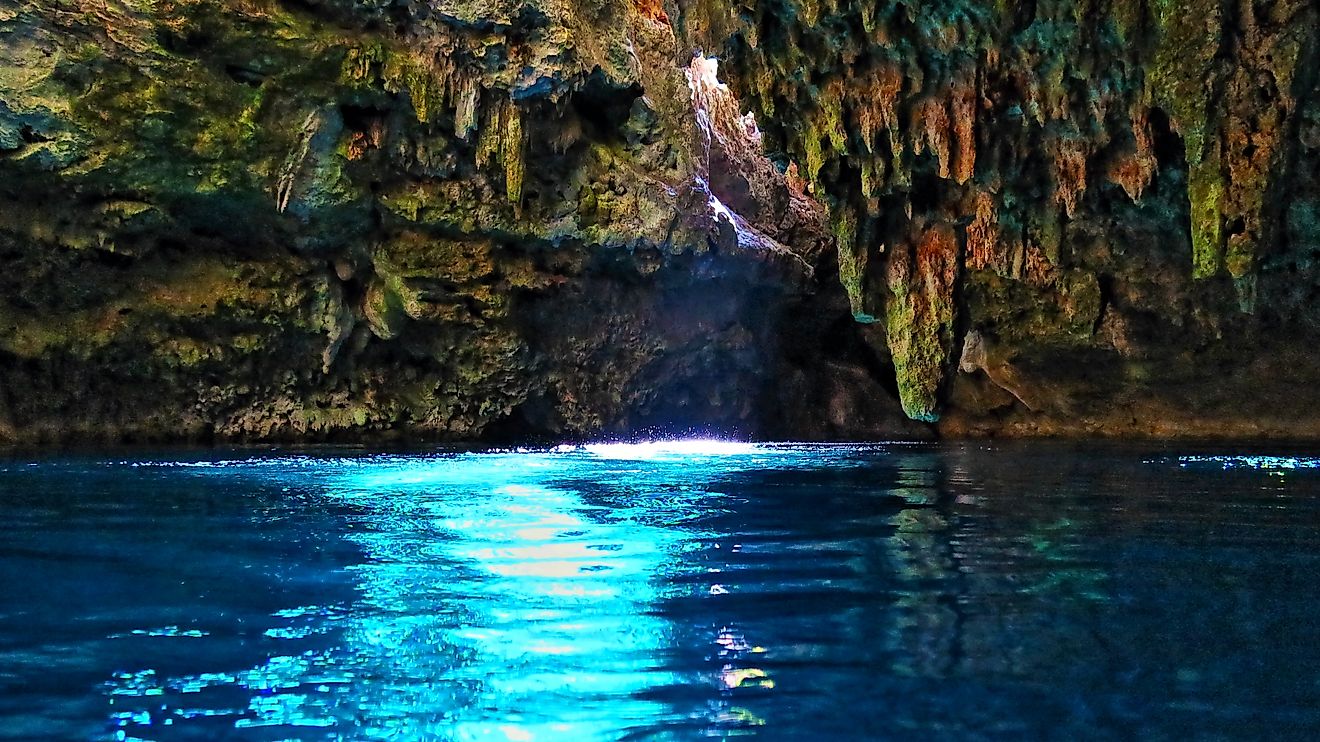
Blackwater River
Flowing through southeastern Virginia is the Blackwater River, a 105-mile-long waterway that helps form the border of the Virginia-North Carolina border. The river basin area is relatively small but contains many swamps. It has a variable depth due to the swamp-like nature of the river and has a discharge of around 188 cubic feet/second. The river is a part of the greater Chowan River system that also includes the Mehrrin and Nottoway Rivers.
Source And Course

The Blackwater River begins in a collection of swamps just south of Petersburg, Virginia. From there, the river begins to flow southeast through Prince George County. In this region, the Blackwater is known as the Blackwater Swamp due to the many swamps and pocosins along the way. The river then forms the border of Surry County and Sussex County, becoming known as the Blackwater River. In southern Surry County, the river makes a southern turn and helps form the border of Isle of Wight County and Southampton County. Here, it flows past the town of Franklin, which sits on the western bank. The Blackwater then helps form the border of Southampton County and the city of Suffolk. Around 9 miles south of Franklin, the Blackwater River forms a confluence with the Nottoway River, forming the Chowan River. Along the 105-mile-long length, the Blackwater River collects many tributaries, including the Warwick Swamp, Otterdam Swamp, Coppahaunk Swamp, Cypress Swamp, Terrapin Swamp, Antioch Swamp, Seacock Swamp, Corrowaugh Swamp, and Kingsale Swamp.
Climate
Like much of Virginia, the Blackwater River area falls in the humid subtropical climate zone. Thus, though the area experiences the seasonal cycle, the summers are longer and are marked with high heat and humidity. The area is also likely to see rainfall and flooding in the lowlands. The high temperatures continue into the winter, which is generally mild and lacking major snowfall.
Wildlife

The Blackwater River is a true blackwater river, meaning the river is slow-moving, acidic, and darkly stained, often resembling black tea. Such rivers often flow through heavily forested or swampy areas, and the Blackwater River is no exception. The Blackwater is also known for its pocosins, which are deep, acidic, and sandy wetlands.
A unique variety of flora and fauna live along the Blackwater River due to the blackwater nature of the river. Most of the forested swamps along the way are full of bald cypress and tupelo trees. There is also the rarer longleaf pine tree in the area. One of the most common birds in the Blackwater River area is the Red-Cockaded Woodpecker, which lives in the flatwood parts of the river land. There is also a large number and variety of waterfowl. The area is also full of many reptiles and amphibians. In terms of mammals, there are white-tailed deer, raccoons, and squirrels. However, the most pronounced animal population in the area is fish. Redbreast sunfish, largemouth bass, bluegill, crappie, bowfin, and gar, among many others, can be found in the Blackwater River.
History
The Blackwater River's major historical role began in 1646 when it became a demarcation line between the Virginian Colony and the Powhattan Confederacy. The Native Americans were only allowed to cross the river at one point, Fort Henry, and the Virginians were forbidden to settle in Native American lands. However, many settlers simply ignored this. In 1706, the law was revoked. The river was also important for transportation in the colonial era, with canoes and small crafts easily navigating the Blackwater. During the American Revolution, there was scattered raiding of warehouses and stores on the Blackwater River. During the American Civil War, the Blackwater River was the boundary between Confederate Virginia and Union territory. Still, despite this, the border was poorly defended, and thousands of enslaved people fled to freedom.
Navigation

Transportation was common in the early colonial area, with commercial goods such as tobacco and pork being transported down the river. During the 19th century, only the lower part of the Blackwater River was plied by small craft. The Blackwater River is popular with canoers and boaters in the modern era due to its slow-flowing nature. It is also popular with anglers and wildlife lovers due to the abundance and varied wildlife in the area.
The Blackwater River is a natural gem of Virginia. It is home to a great diversity of wildlife in its waters and along the vegetation covering its banks. The river also offers great recreational opportunities. Conservation groups also own several tracts of land along the Blackwater River to preserve the wetlands and swamps.











